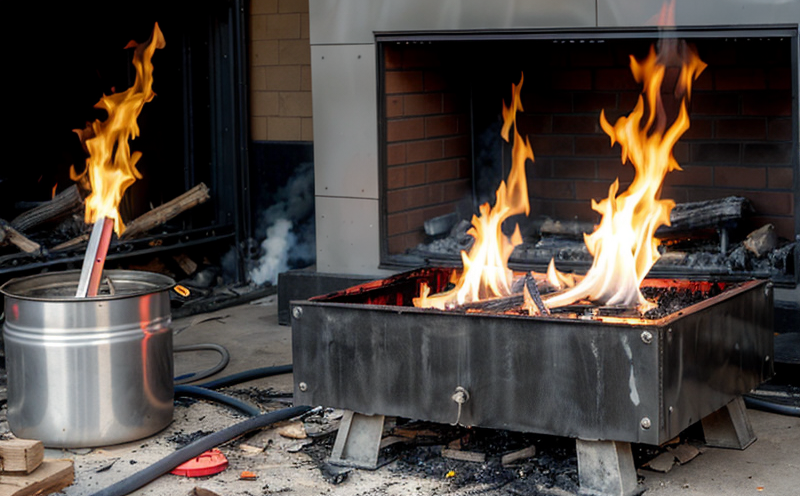EN 50399 Cable Fire Performance Testing
The EN 50399 standard provides a comprehensive framework for assessing the fire performance of power and control cables, including their flame retardant properties. This service is particularly critical for ensuring that cables meet stringent regulatory requirements to prevent potential hazards in various applications.
The testing process involves subjecting cable samples to controlled burning environments under specified conditions to evaluate how they resist ignition and extinguish self-sustained combustion once the source of ignition is removed. The primary focus is on the time it takes for the flame to spread along the cable, the maximum temperature reached during flaming, and whether the cable continues burning after the ignition source is removed.
Testing under EN 50399 ensures that cables meet specific fire safety standards set by regulatory bodies like the European Union. This is especially important for industries where electrical systems are integral to safe operations, such as aviation, automotive, and electronics manufacturing.
The service typically involves several steps:
- Cable selection based on the intended application and environmental conditions.
- Preparation of cable samples according to standard procedures.
- Conducting the flame test in a controlled environment using appropriate apparatus such as an oxygen index tester or a vertical burning apparatus.
- Monitoring parameters like ignition time, peak heat release rate, smoke production, and residual char length.
- Evaluation of the results against predefined acceptance criteria outlined in EN 50399.
The results of this testing are crucial for manufacturers who need to ensure their products comply with international standards. Compliance with these tests can significantly reduce liability risks and enhance the reputation of a company within its industry.
| Aspect | Description |
|---|---|
| Cable Selection | The type and size of cables to be tested are determined based on the intended application, environmental conditions, and regulatory requirements. |
| Sample Preparation | Cables are cut into standard lengths and prepared according to specific procedures as outlined in EN 50399. |
| Burning Environment | The test is conducted in a controlled environment that simulates real-world conditions, using appropriate apparatus such as a vertical burner. |
| Data Collection | Parameters like flaming time, peak heat release rate, smoke production, and residual char length are recorded during the test. |
| Evaluation Criteria | The collected data is compared against predefined acceptance criteria to determine compliance with EN 50399. |
This testing service ensures that cables meet the stringent requirements set by international standards, thereby enhancing their safety and reliability. The results of this testing can be used for regulatory compliance purposes or to improve product design.
Scope and Methodology
| Aspect | Description |
|---|---|
| Cable Selection | The type and size of cables to be tested are determined based on the intended application, environmental conditions, and regulatory requirements. |
| Sample Preparation | Cables are cut into standard lengths and prepared according to specific procedures as outlined in EN 50399. |
| Burning Environment | The test is conducted in a controlled environment that simulates real-world conditions, using appropriate apparatus such as a vertical burner. |
| Data Collection | Parameters like flaming time, peak heat release rate, smoke production, and residual char length are recorded during the test. |
| Evaluation Criteria | The collected data is compared against predefined acceptance criteria to determine compliance with EN 50399. |
Benefits
Compliance with EN 50399 can provide numerous benefits to manufacturers and users of cables:
- Enhanced safety: Ensures that cables will not contribute to the spread of fire in critical applications.
- Regulatory compliance: Helps businesses meet legal requirements and avoid costly penalties.
- Improved reputation: Demonstrates a commitment to quality and safety, which can enhance brand image.
- Increased market access: Compliance with international standards can open doors to new markets.
- Potential for innovation: The testing process may identify areas where cables can be improved or optimized for better performance.
In addition to these direct benefits, the service also supports broader efforts towards sustainability and environmental protection. By ensuring that cables are fire-safe, this service contributes to safer working environments and reduced risk of property damage in high-risk industries.





